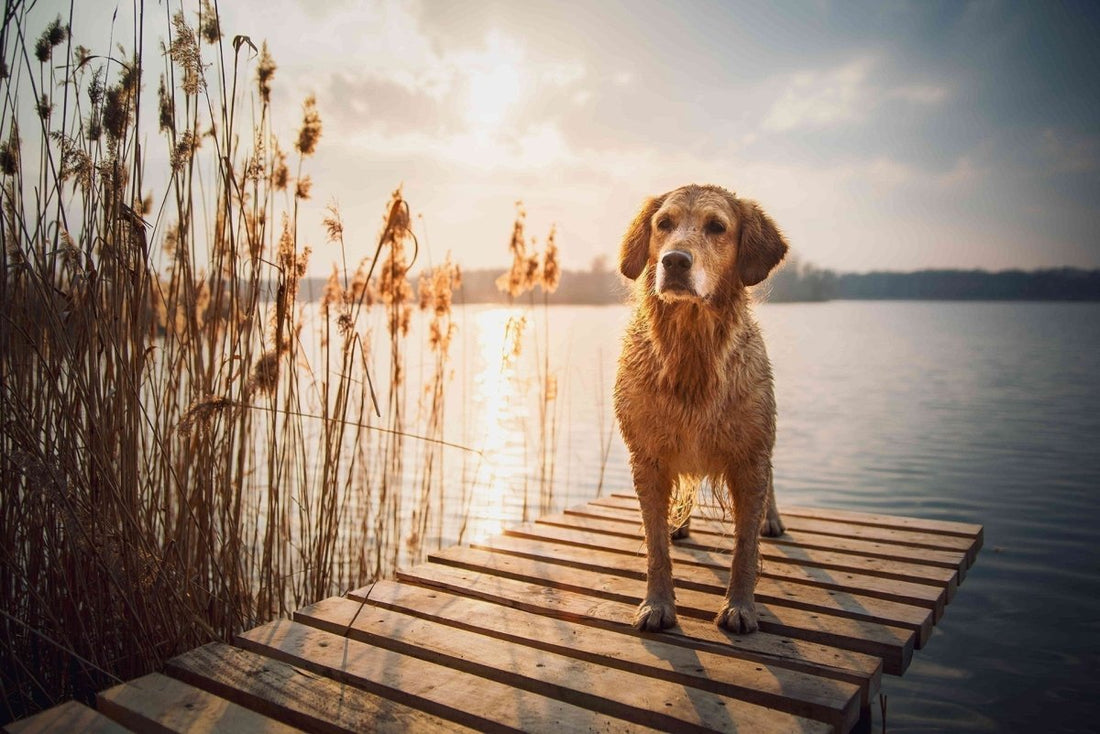Summer: It's warm and the days are long... ideal for spending a lot of time outside with your four-legged friend. However, there are a few things to keep in mind so that you can enjoy your time together without any worries.
Car – Danger to the dog's life
Even though hopefully everyone should know this, there are some things that cannot be said often enough: Never leave your dog alone in the car in summer. The temperatures inside the vehicle can rise to dangerous levels in a very short time, which could endanger your dog's life.
Why do dogs pant?
Dogs pant a lot, especially in summer. They often do this to regulate their body temperature. Unlike us, dogs have very few sweat glands, which are mainly located on their paws. Therefore, they have to cool down by panting. When a dog pants, saliva evaporates on the tongue and the mucous membranes in the mouth and throat. This evaporation process removes heat from the body and helps to lower the body temperature. Since a lot of water evaporates when panting, it is especially important to provide your dog with enough water in warm temperatures.
If it is necessary to put a muzzle on your dog, it is absolutely important that the muzzle fits and gives your dog enough opportunity to pant.
Can my dog get sunburned?
Yes, dogs can actually get sunburn. Normally, dogs are well protected from this by their fur. However, many dogs often have significantly less fur around the nose, ears and stomach. Sunburn on a dog's stomach is of course rather unlikely, but the bridge of the nose and the area around the ears can quickly get sunburned. It therefore makes sense to protect the vulnerable areas with sunscreen. Light-skinned and particularly short-haired dogs, as well as hairless dogs, are logically more at risk overall than many other dogs.
Summertime = tick time
Every year this annoying topic comes up again. Probably everyone already knows that ticks transmit a whole range of nasty diseases such as Lyme disease or anasplasmosis. Therefore, it is important to protect your dog from ticks. This includes regular checks of the coat for ticks, the use of tick repellent products and, if necessary, vaccinations against certain diseases.
water tail due to swimming
Limber tail syndrome is a painful condition in dogs. It can be caused by exposure of the stressed muscles to cold, such as when swimming for a long time in cold water.
The symptoms of a wet tail are easy to recognize: the tail hangs limply and is barely or not at all raised. Since it is painful for the dog, touching or sitting on it is unpleasant for the dog.
Rest and warmth usually help with a wet tail. If the pain is severe, a vet can help with painkillers and anti-inflammatory medication to relieve the symptoms. Most dogs recover completely within a few days.

Watch out for awns!
Awns are the sharp, bristly seed heads of certain grasses that can be dangerous for dogs. They are particularly common in late spring and summer.With their barbs, awns can easily cling to the dog's fur and penetrate the ears, nose, eyes, paws or skin.
Due to their shape, the small, pointed awns can burrow into the skin, so to speak, and gradually penetrate deeper and deeper. This can lead to painful inflammation and abscesses. Depending on where the awn penetrates, the symptoms can vary. Signs can include limping, intensive licking or biting of a certain spot, violent head shaking or frequent sneezing.
The question now is: How can I protect my dog from awns? Ideally, your dog should have learned to stay on paths. But even that is of course not 100% protection, as awns are often found on the side of the path. The best prevention is to check your dog thoroughly after a walk to remove awns from its fur before they make their way deeper into the ground.
Hot asphalt – danger for dog paws?
Asphalt absorbs and stores heat, which can cause surface temperatures to rise on hot days. But is that really dangerous for dog paws? If dogs had the choice, they would probably not stay on asphalt for long and would simply walk away because it is uncomfortably hot. Now, there is often a human on the leash, which takes away the dog's freedom of choice at this point. So it is up to the human to make the right decision. Short asphalt walks to the nearest forest or park can rarely be avoided, but will not cause serious damage to dog paws. But if a human decides to have a one-hour chat with the neighbor on a sunny asphalt road while the four-legged friend has to wait next to them, or to go on a two-hour bike ride on unshaded asphalt paths, you can definitely speak of a danger to dog paws. Although the danger then comes less from the asphalt and more from common sense.
In short: Of course, asphalt gets uncomfortably hot at high temperatures. This is something you should know and take into account. But that doesn't mean that dogs are no longer allowed to walk a meter on asphalt.
Our summer tip:
In summer temperatures, longer dog walks or training sessions should be postponed until the cooler morning or evening hours. The activities should of course be individually adapted to the dog and the temperature.



